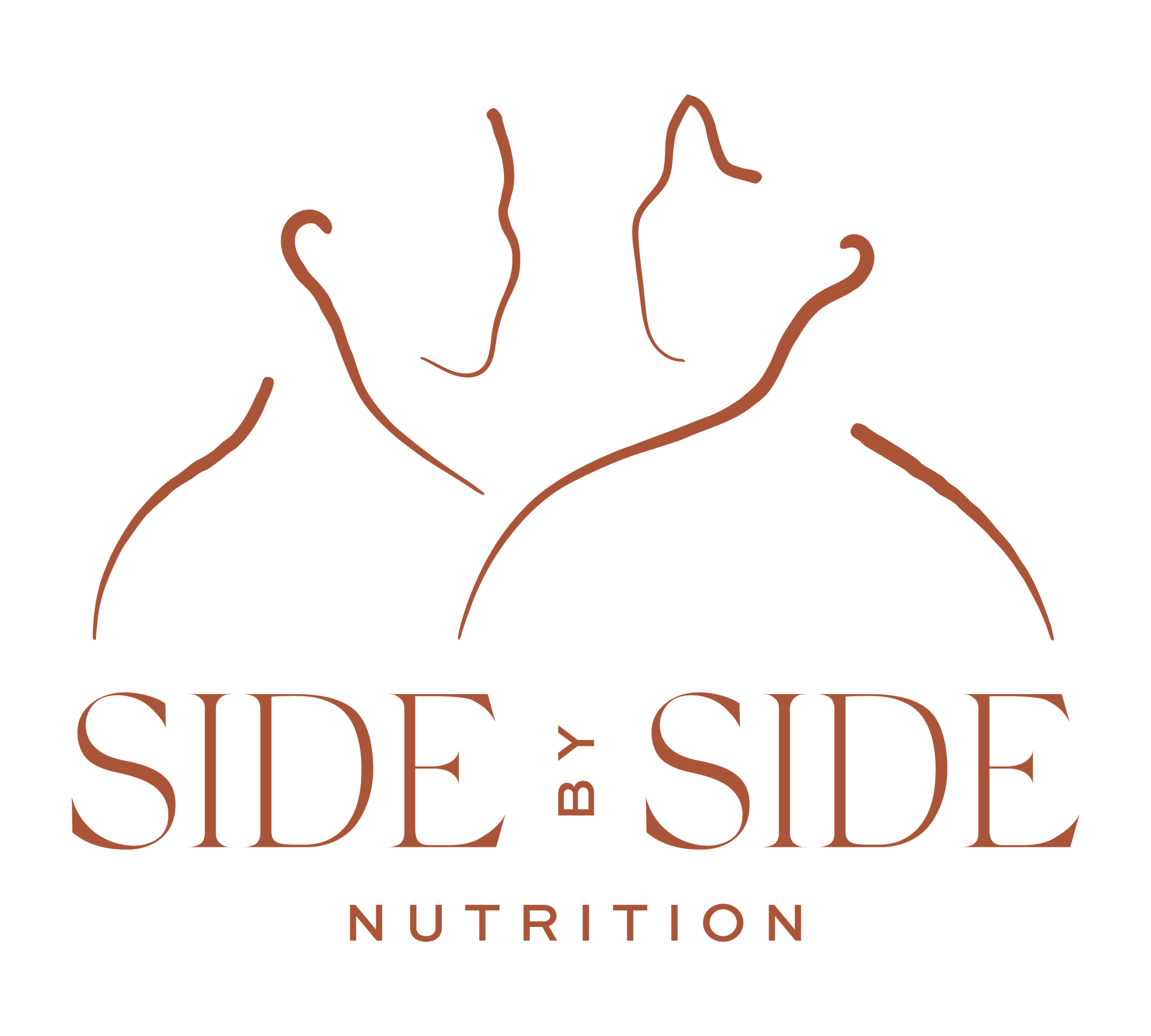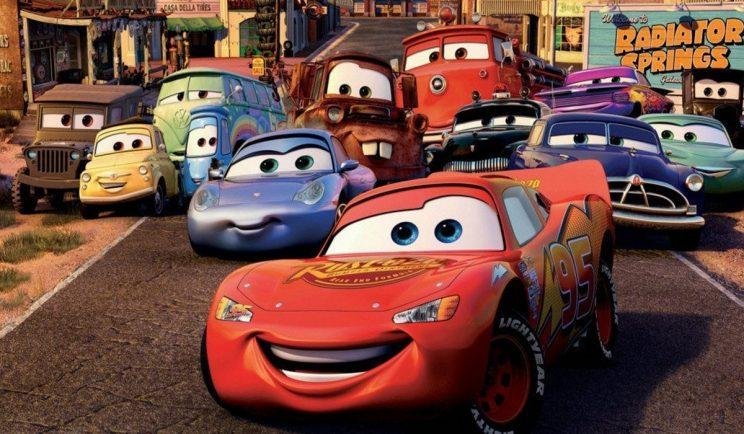Your Body is Not a Car. It's a Factory
People tend to bring up calories to me a lot. And sometimes, I pause to ask them what a calorie is. The answer tends to be vague guesses, or a straight up “I don’t know.” And that’s okay. None of us can know everything about the societal rules we follow. They become so ubiquitous that they flow, translucently through us and all around us.
Sometimes, it’s important to look around and ask questions about the water we’re swimming in. If you don’t know what a calorie is, why does it bring up such deep concern? Why do we make decisions based on them? Perhaps there are other areas in life where you might have similar rules. Rules that feel important, inevitable, and implied as common sense even though we don’t actually know why?
One way to start observing your water and untangling your authentic beliefs from nutrition myths is to learn more about history. While history has the potential to be biased, it also can be an important thread which underscores your informed consent. Welcome to what my clients affectionately know as “History Corner!”
Did you know that the calorie is not something that exists within food, but a unit of measurement? It was originally created to measure energy in train engines. Yes, trains. Not humans, not food. The calculative definition is: the heat needed to raise the temperature of 1 kilogram of water by 1 degree celsius.
Think on this for a minute. How did we get from a train equation, to feeling this is a definitive measurement of our food needs?
Just like most tenets of diet culture, it starts with the unbridled confidence and unscientific musings of someone credentialed who decided to write some stuff down, market it as true, popularize and integrate it into an expectation of participation in informed society. It’s an incredibly reliable formula, really.
“Intestine length, personal microbiome, and genetic makeup are just three of many uncontrollable factors which affect how a body uses ‘a calorie’”
After men returned from World War I, it was observed that women who had filled their roles were reluctant to leave work. We see a few major things marketed at them to occupy their time, such as the first bathroom scale called the Health-o-Meter in 1919*. But first, in 1918 Dr. Lulu Hunt Peters wrote a book called Dieting and Health: with Key to Calories. Her use of the calorie introduced the model of the human body as a vehicle, coinciding with the popularity of automotive cars increasing around this time in history.
*Fun fact: women’s suffrage in America was taking place around this time, leading to the right to vote being won in 1920…
The problem is, this is a very faulty comparison. Your body is not a car. It doesn’t run on a finite amount of gas that it uses only when in motion. It is much, much more complicated than that. But false equivalents and oversimplifications leave most of us feeling that we are a simple equation, a predictable machine. And how it runs depends only on the operator, any problems are explainable, mechanical, and fixable. Fuel is for output, and nothing more. But you are not a car. None of us are.
Except these folks. These are the only (and best) human-cars I know!
Your body is not a car. You are a person, a spirit, a human, a family, a living being. But if you must have a metaphor, consider that your body is not like a car, it is more like a factory. See, a factory comprises complex systems and in this analogy, never closes. Each worker in a factory has a distinct role in keeping a production line running smoothly, even the workers who are not directly on the line. Each worker has individual needs for them to function productively, and safely. Each bolt, cog, and belt in the factory must also be maintained regularly, attended to with care, and ideally unnoticeable when things are running as they are supposed to within the tangle of systems. For the factory which never closes, or which will not reopen once it does, consistency and supply is integral to sustainable output needed to meet rolling demands.
Often clients tell me, “I just ate so why am I hungry” or “I’ve been doing more snacks for the past couple weeks, so I don’t get why I am still so tired all the time.” When you think it's as easy as gas in the tank = miles of smooth driving, then of course this is confusing. But have you noticed how long it takes to grow a fingernail? Fingernails require building blocks like amino acids, multiple B vitamins to support growth, folate to help with blood cell formation under the nail, magnesium for helping with protein synthesis for even nail growth. Your nail itself is made from keratin, but that has to be constructed from different building blocks your body derives from various foods. The average rate of growth for a human fingernail is 2.5 millimeters (~1/10th of an inch) per month.
When some of the supplies & building blocks your body needs is missing, we develop deficiencies. These can become noticable over time in many ways, but there are a lot of deficiencies we cannot see like the ones here.
Let’s zoom out on that. That is one of the tiniest, non-life threatening, simplest part of our bodies. And you could probably fill 50 pages with in depth detail on how many systems interact to produce and maintain a nail. Now amplify that times all of the other systems, seen and unseen, big and small, complex and somewhat less complex. (Nothing in the body is simple)
Healing from undernutrition is a long process because your body is allocuting supply of resources to hundreds of complex systems like this. It’s not simply diving up “calories” but getting the supplies and building blocks it needs from food. And making diligent choices about which departments in the factory to keep running and which to slow down, reduce output, or lay off workers they can’t afford to keep or support. The reason your input on today's meals or yesterday’s snacks isn’t causing instant results is because we are not going out to a parked car, putting gas in and turning on the key. We are throwing long overdue supplies at a massive factory which has never shut down, and has been making due with the limited supplies it had the whole time. To save, we had to fire the guy who checks that the bolts are tightened. We didn’t get any shipment of the wheel degreaser, so the belts are moving, but they are slower and rusting over time. We turned the lights off in 50% of the factory to save on energy costs, but the workers there are not putting out the same quality products at the same rate, because it is much harder in the dark.
You see where I am going with this. I could expand this metaphor all day. And this is why simply giving the factory some of the supplies it has already been low on for a long time is not enough to have it start running as it once did. It’s why it takes a very long time to catch up. It’s why continuing to patch holes now adds new strain on the systems that makes it harder for them to return to their fluidity they had when the factory was new. Some of the energy now has to always go to patching the damage created by the supply shortage, even if the shortage itself has been resolved for a while. Some workers get so burnt out they don’t come back or they can barely keep up with their tasks. A long-term supply shortage can be devastating.
Again, you are not a factory. You are not a car. You’re not even just a body. You are so much more than that. You contain multitudes, worlds, ecosystems!
(Don’t take my word for it; look up face mites or the gut microbiome, or even the anatomy of a cell)
Thankfully, the human body is more intuitive and complex than the models we use in our attempts to interpret it. That’s why it tends to ask for what it needs, and for some folks, we can interpret and fulfill those needs differently. It’s why we don’t crave calories; we crave food. Listen to what the supply manager is asking you to order. Following an outdated manual from the 1920s about how to run your business in this day and age is bound to leave you with some foreseeable challenges. How do you want to run your factory? How do you want to provide for yourself? This is your system, your show, your shot.
We may not be able to control or even understand every part of the factory, but you can forge a value system which prioritizes body respect and make sure you do your part to keep the supply chain flowing.
About the Author
"Kymber Stephenson is a Registered Dietitian Nutritionist living and working in the Greater Denver area. Her experience began with a love of food which led her to pursue a degree in Culinary Arts from Johnson & Wales University. As her love of science and helping people wove with that initial path, she continued on to a Bachelor of Science in Culinary Nutrition with a dual concentration in clinical dietetics and culinary food science.
Kymber is especially passionate about eating disorder management and prevention. In this vein, she focuses on educating clients about the multi-faceted ways history, marketing, food systems, culture, psychology, and body image affect health and relationships to nutrition, food, and body. She works with clients to truly fall in love with food again, acknowledging not only its nourishing properties, but truly embracing its comforts, tradition, and fun! Working in a client-guided manner with a Health at Every Size approach, she strives to help each unique person reach their idea of peace and satisfaction in their bodies and their overall lives. Kymber's driving philosophy is that all people deserve equitable access to quality food and evidence-based nutrition education, regardless of status or background."









